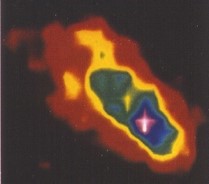Colleagues:
I have always found Excel to be one of the best optomechanical analysis tools.
AEH has recently enhanced the Ivory3 Optomechanical Modeling Tools to make Nastran and Excel even more powerful for the optomechanical engineer.
It’s not that Nastran doesn’t do its job, but it’s only a finite element code. For optical systems the engineer needs more methods and tools to interpret Nastran’s results optically. Ivory3 unleashes the power of Nastran into Excel to analyze optomechanical design issues:
Ivory3————————— into –>Nastran———- into —>Excel ——————-|



Optical prescription data > opto-structural model > LOS error contributors
In this example Ivory3 puts the image registration errors (ie. line-of-sight) into Nastran’s output file, both the net effect and the element-by-element effects, which may be cumulatively summed and plotted in Excel for the engineer’s assessment. Obviously elements 1, 5 and 11 are the big drivers in this LOS error problem.
When you need to stabilize
your image AEH has the tools!
Al H.
3-8-18











